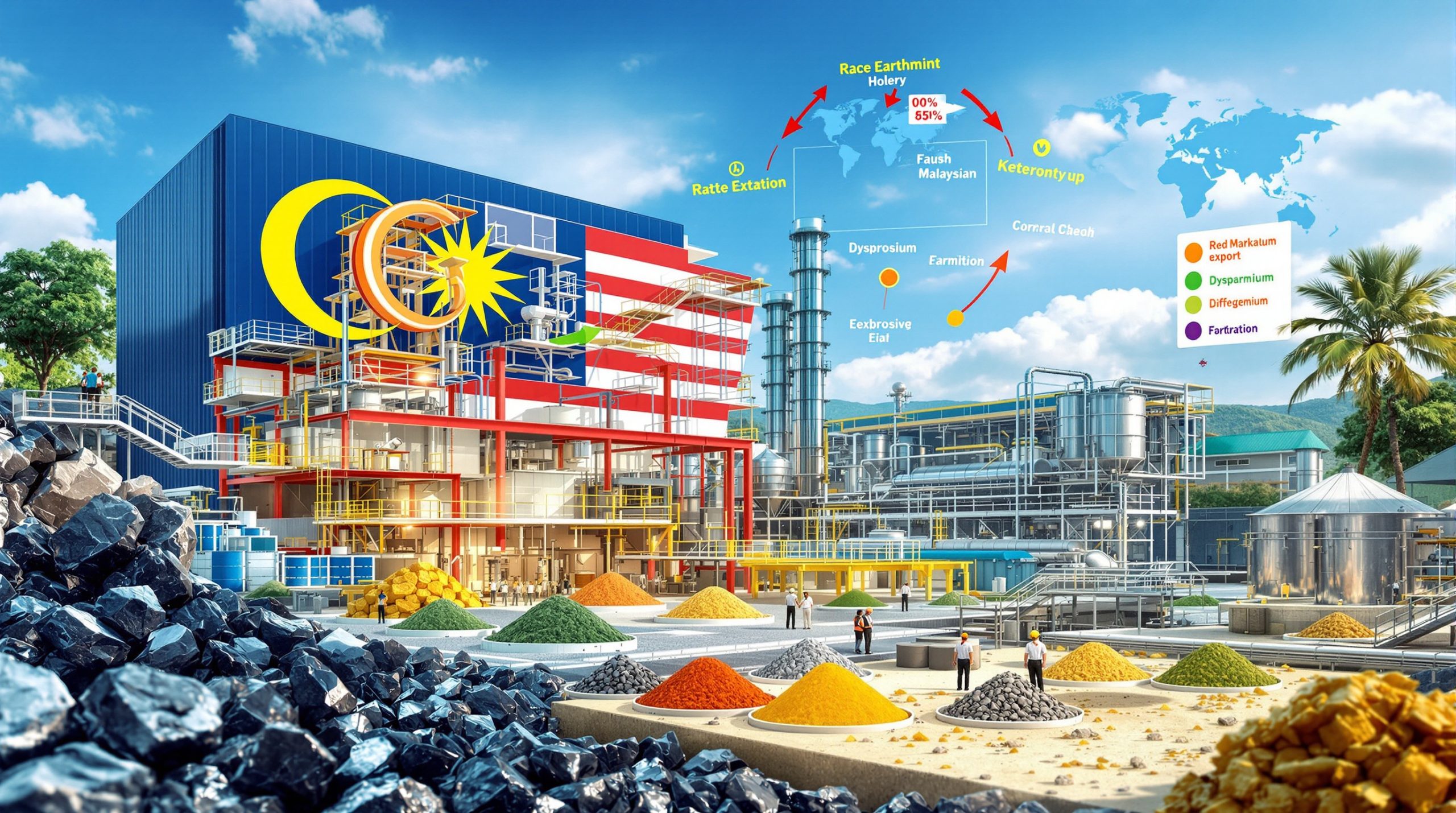Why Are Copper Stocks Gaining Attention in 2025?
The copper market is experiencing unprecedented momentum in 2025, creating compelling opportunities for investors interested in ASX 200 copper stocks. With Goldman Sachs recently upgrading its price forecasts for the red metal, copper-focused companies on the Australian Securities Exchange are attracting renewed interest from both institutional and retail investors. This surge is driven by persistent supply constraints, accelerating global demand, and copper's increasingly critical role in the worldwide energy transition.
According to Goldman Sachs' latest commodity analysis, the copper market is experiencing "significant over-imports into the United States causing fears of shortages elsewhere, despite the global market technically being in surplus." This regional imbalance has created pricing anomalies that are expected to support higher copper prices through August 2025.
The Current Copper Price Landscape
Copper prices have demonstrated remarkable resilience in 2025, with the London Metal Exchange (LME) price currently sitting at US$9,712 per tonne as of June 26, 2025. Goldman Sachs' revised forecasts paint an optimistic picture for the red metal, projecting:
- US$10,050 per tonne by August 2025 (peak forecast)
- US$9,700 per tonne by December 2025
- US$10,350 per tonne by December 2026
This represents a significant upgrade from Goldman's previous second-half 2025 forecast of US$9,140 per tonne to the current US$9,890 per tonne, reflecting stronger underlying fundamentals in the copper market.
The rise in ASX 200 copper stocks has been directly correlated with these improving price projections, with many producers now trading at multi-year highs as investors position for potential further gains.
What's Driving the Copper Price Surge?
Supply-Demand Dynamics Creating Market Tension
The current copper market is experiencing unique supply pressures that are contributing to price increases. Several key factors are at play:
- US Import Surge: U.S. copper imports have jumped 22% year-over-year in Q1 2025, creating significant over-imports that have caused fears of shortages in other regions
- LME Time Spread Blowout: Despite the global market technically being in surplus, regional imbalances have caused pricing anomalies, with the LME cash-to-three-month spread reaching unprecedented levels
- Short-Term Supply Constraints: Limited new mine development has restricted supply growth, with major producer Codelco reporting production at a 25-year low in May 2025
- Energy Transition Demand: Increasing requirements for copper in renewable energy infrastructure and electric vehicles has accelerated demand forecasts
LME warehouse stocks have declined 35% since January 2025, further tightening the physical market despite technical indicators suggesting a global surplus. This disconnect between paper and physical markets has created unique trading opportunities.
The Critical Role of Copper in Global Markets
Copper's fundamental importance to multiple industries continues to grow at an accelerating pace:
- Electrical Systems: Essential component in virtually all electrical systems and renewable energy infrastructure
- Electric Vehicles: Critical material for EV production, requiring 3-4 times more copper than conventional vehicles, with Tesla's 4680 battery cells alone requiring approximately 45kg of copper per vehicle
- Industrial Applications: Key industrial metal for construction, manufacturing, and infrastructure development
- Strategic Resource: Countries pursuing decarbonization goals increasingly view copper as a strategic necessity
"Limited new mine development has restricted supply growth… while energy transition demand accelerates," notes Bernd Struben of Motley Fool Australia, highlighting the fundamental mismatch between current production capabilities and projected demand.
The mining industry's typical 5-7 year lead time for new projects has created a structural supply deficit that many analysts believe will persist through the mid-2020s, further supporting the rise in ASX 200 copper stocks.
Top 3 ASX 200 Copper Stocks to Watch
BHP Group Ltd (ASX: BHP) – The Diversified Mining Giant
BHP has been strategically increasing its copper exposure, making it an interesting option for investors seeking copper exposure with reduced single-commodity risk. The company's balanced portfolio provides stability while still offering significant upside to rising copper prices.
BHP's Growing Copper Portfolio
The mining giant has shown impressive copper production growth across its global operations:
- FY 2024 copper production increased 9% to 1.87 million tonnes
- H1 FY 2025 saw underlying copper EBITDA surge 44% year-on-year to US$5 billion
- Copper now represents 39% of BHP's underlying EBITDA (up from 29% in FY 2024)
- Q1 2025 (three months to March 31) copper production increased 10% year-on-year
BHP's copper portfolio is anchored by its controlling stake in the Escondida mine in Chile, the world's largest copper mine, alongside Olympic Dam in Australia and investments in several other copper assets.
Investment Considerations for BHP
While BHP offers significant copper exposure, investors should note several key factors:
- Iron ore remains BHP's largest revenue source, with prices declining from US$112/tonne in October to approximately US$93/tonne currently (a 17% decline)
- Diversification across multiple commodities provides both risk mitigation and reduced pure-play copper exposure
- The company's size and market position offer stability compared to pure-play copper miners
- Balance sheet strength (Net debt/EBITDA ratio of 0.8x) provides financial flexibility during commodity price volatility
BHP's diversified approach means investors gain copper exposure while maintaining some protection against copper-specific risks, making it suitable for more conservative portfolios seeking resource exposure.
Sandfire Resources Ltd (ASX: SFR) – The Copper-Focused Mid-Tier Producer
Sandfire Resources represents a more focused copper play on the ASX 200, with operations centered around copper production. The company offers investors greater leverage to copper price movements, though with correspondingly higher risk.
Sandfire's Operational Profile
Sandfire offers investors:
- Primary focus on copper production with gold by-products (gold representing approximately 30% of revenue)
- International operations including the MATSA Mining Complex in Spain (producing 40,000 tonnes of copper in 2024) and DeGrussa Operations in Western Australia
- Production growth potential through the Motheo Copper Mine in Botswana
- More direct exposure to copper price movements than diversified miners
- Cash costs at the DeGrussa mine of approximately US$1.50/lb, providing healthy margins at current prices
Investment Considerations for Sandfire
Key factors for potential investors include:
- Higher sensitivity to copper price fluctuations (both upside and downside)
- Operational risks concentrated in fewer mining assets
- Growth potential through exploration and development projects
- Mid-tier market capitalization offering balance between stability and growth
- AISC (All-In Sustaining Costs) that compare favorably to the median ASX copper miner AISC of US$2.20/lb
Sandfire represents a "middle ground" investment option, offering more direct copper exposure than BHP while maintaining more operational diversification than pure single-mine producers.
Capstone Copper Corp (ASX: CSC) – The Newly Listed Copper Pure-Play
Capstone Copper represents the newest copper-focused addition to the ASX, having only commenced trading on the Australian exchange in April 2024. This timing coincides with Goldman Sachs' increasingly bullish outlook on copper prices.
Capstone's Market Position
As a relatively new entrant to the ASX, Capstone offers:
- Pure-play copper exposure through its portfolio of producing mines
- Mantoverde mine in Chile producing approximately 120,000 tonnes of copper annually
- North American operational base with primary listing on the Toronto Stock Exchange
- International diversification for Australian investors
- Potential growth through development projects and operational optimization
Investment Considerations for Capstone
Investors considering Capstone should evaluate:
- Limited ASX trading history (since April 2024) potentially affecting liquidity
- Chile's ongoing mining royalty reform discussions creating potential regulatory uncertainty
- Pure copper focus providing maximum leverage to rising copper prices
- Operational track record in established mining jurisdictions
- Greater stock price volatility during copper price cycles compared to diversified miners
For investors seeking maximum exposure to the rise in ASX 200 copper stocks, Capstone represents the most focused option among the three companies profiled.
How Might Copper Prices Perform Through 2025-2026?
Goldman Sachs' Copper Price Trajectory Forecast
Goldman's analysis suggests a specific price pattern over the coming months, which could significantly impact ASX 200 copper stocks:
- Near-Term Rise: Continued price increases over the next two months from the current US$9,712/tonne
- August Peak: Prices expected to reach their 2025 high of US$10,050/tonne in August
- Year-End Moderation: Some pullback to US$9,700/tonne by December 2025
- 2026 Strength: Renewed strength pushing prices to US$10,350/tonne by December 2026
This forecast represents a significant upgrade from Goldman's previous outlook and stands in contrast to some more conservative analysts. While Goldman's outlook is bullish, other institutions like Citi Group maintain a more cautious view, with their bear case suggesting prices could drop to US$8,500 by Q4 2025.
Factors That Could Impact Price Forecasts
Several variables could influence whether these price projections materialize:
- Chinese Demand: Economic activity levels in the world's largest copper consumer will be crucial, with recent Chinese customs data showing mixed signals
- US Import Levels: Whether US copper price insights and imports normalize or continue at elevated levels will impact global supply distribution
- New Mine Supply: Timing and scale of new copper projects entering production, with global production forecast showing growth projected at just 1.9% versus demand growth of 3.4% in 2026
- Energy Transition Pace: Rate of global investment in renewable infrastructure and EV adoption
- Global Economic Conditions: Overall industrial activity and construction sector health
- LME Warehouse Dynamics: Continued drawdown of inventory levels could accelerate price movements
The projected supply-demand imbalance represents the fundamental driver for potential price increases, with copper demand surge consistently outpacing new supply additions.
How to Evaluate Copper Mining Stocks
Key Metrics for Assessing Copper Companies
When analyzing potential copper stock investments in the ASX 200, consider these critical factors:
- Production Costs: All-in sustaining costs (AISC) per pound of copper produced, with the median ASX copper miner AISC currently at US$2.20/lb
- Reserve Life: Years of production available at current mining rates (calculated as proven reserves divided by annual production)
- Production Growth: Near and medium-term production expansion potential
- Balance Sheet Strength: Debt levels and financial flexibility, with Net debt/EBITDA ratios ranging from 0.8x for BHP to 1.5-2x for mid-cap producers
- Jurisdiction Risk: Political stability of operating regions, measurable via the Fraser Institute Mining Policy Index
- By-Product Credits: Revenue from gold, silver, or other metals that offset copper production costs
- Development Pipeline: Future projects that could increase production capacity
- Carbon Intensity: Scope 1 emissions per tonne of copper produced (e.g., BHP: 1.2t CO2e/t), increasingly important for ESG-focused investors
Risk Factors to Consider
Copper mining investments carry several specific risks that should be factored into investment decisions:
- Price Volatility: Copper prices can experience significant short-term fluctuations based on macroeconomic factors
- Project Delays: Mine developments frequently encounter timeline extensions and cost overruns
- Grade Variability: Changes in ore grade can significantly impact production costs and output
- Environmental Regulations: Increasing compliance requirements and potential penalties, particularly in jurisdictions implementing stricter emissions standards
- Labor Relations: Potential for strikes or workforce disruptions, especially in regions with strong mining unions
- Technical Challenges: Mining and processing complications that can affect production efficiency and costs
- Currency Fluctuations: Exchange rate movements between operating currencies and USD (the pricing currency for copper)
"The 10% leverage effect is particularly notable – a 10% rise in copper prices typically translates to approximately 25% EBITDA uplift for producers due to their fixed cost base," according to analysis cited in the Motley Fool Australia report.
Frequently Asked Questions About Copper Investments
What is driving the current copper market dynamics?
The copper market is currently experiencing unique supply pressures, with Goldman Sachs noting significant over-imports into the United States creating fears of shortages elsewhere despite the global market technically being in surplus. This has resulted in a blowout in London Metal Exchange time spreads and is expected to support higher prices through August 2025.
The regional imbalance is particularly noteworthy as it demonstrates how copper prices can be influenced by localized supply-demand disparities even when global fundamentals suggest different conditions.
How does copper fit into the energy transition?
Copper plays a critical role in the global energy transition as an essential component in:
- Solar and wind power generation systems (approximately 5 tonnes per MW of installed capacity)
- Electric vehicle production (3-4x the copper content of conventional vehicles) and charging infrastructure
- Energy storage solutions, with Tesla's 4680 battery cells requiring approximately 45kg of copper per vehicle
- Power transmission and distribution networks (up to 8 tonnes per km of high-voltage line)
This positions copper as a potential beneficiary of continued investment in decarbonization technologies, with the EU Critical Raw Materials Act specifically identifying copper as a strategic resource for Europe's green transition.
Which ASX 200 copper stock offers the most direct exposure to copper prices?
Of the three companies discussed, Capstone Copper (ASX: CSC) and Sandfire Resources (ASX: SFR) offer more direct exposure to copper price movements as their operations are primarily focused on copper production. BHP provides significant copper exposure but with diversification across other commodities, particularly iron ore.
The pure-play nature of Capstone means it typically demonstrates higher beta (price sensitivity) to copper price movements, offering greater upside potential during price increases but also greater downside risk during price declines.
How might rising copper prices affect mining company profitability?
For copper producers, price increases can have a substantial impact on profitability due to:
- Operating leverage (fixed costs remain stable while revenue increases)
- Margin expansion on each pound of copper produced
- Improved economics for development projects
- Potential for dividend increases or share buybacks
A sustained US$1,000/tonne increase in copper prices can significantly boost free cash flow for producers. For example, a 10% copper price rise typically translates to approximately 25% EBITDA uplift for producers due to their fixed cost base, highlighting the leveraged exposure these stocks provide to the underlying commodity.
Conclusion: Positioning for Potential Copper Market Strength
The outlook for ASX 200 copper stocks appears promising based on Goldman Sachs' upgraded price forecasts and the underlying supply-demand dynamics in the copper market. With prices projected to peak at US$10,050/tonne in August before moderating slightly by year-end, investors may find opportunities in companies like BHP Group, Sandfire Resources, and Capstone Copper.
Each company offers a different risk-reward profile:
- BHP provides copper exposure with diversification across other commodities, suitable for more conservative investors
- Sandfire offers more focused copper exposure with a mid-tier risk profile, balancing growth potential with operational diversity
- Capstone represents a newer ASX listing with pure-play copper operations, offering maximum leverage to copper price movements
As with any commodity investment, timing and risk management remain crucial, but the fundamental outlook for copper through 2025-2026 provides a potentially favorable backdrop for well-positioned producers. The US copper outlook and projected supply growth of just 1.9% versus demand growth of 3.4% in 2026 creates a structural deficit that could support prices well beyond Goldman's current forecasts.
For investors looking to capitalize on this trend, understanding various copper investment strategies will be essential to navigate this dynamic market effectively.
Disclaimer: Commodity prices are inherently volatile and subject to rapid changes based on various market factors. Investors should conduct their own research and consider their risk tolerance before making investment decisions. Past performance is not indicative of future results.
Searching for the Next Major Copper Discovery?
Stay ahead of the market with Discovery Alert's proprietary Discovery IQ model, providing instant notifications on significant ASX copper discoveries and turning complex mineral data into actionable insights. Explore historic examples of exceptional returns from major discoveries by visiting the Discovery Alert discoveries page and begin your 30-day free trial today.




